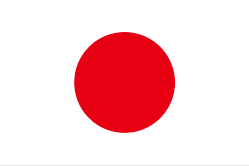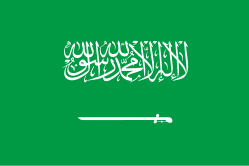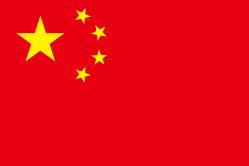Introduction: Digital Technology and Custom Production
The global custom apparel market represents a significant opportunity, projected to reach substantial figures in the coming years, driven by trends like social media influence and the growth of e-commerce. Traditionally, methods such as screen printing and Direct-to-Garment (DTG) printing have presented notable barriers for new businesses due to high initial costs, complex setups, or specific technical demands. Direct-to-Film (DTF) printing technology is emerging as an accessible alternative, offering capabilities that can empower startups and independent entrepreneurs looking to enter the custom apparel space without requiring extensive upfront investment typical of larger-scale operations.
This guide explores how DTF printing addresses some financial and operational challenges, offering insights into launching a custom apparel business using this technology.
Part 1: How DTF Printing Addresses Small-Scale Production Needs
1.1 Considerations with Traditional Methods
Screen Printing: Often requires significant investment in screens and setup, becoming cost-effective primarily for larger bulk orders.
DTG Printing: While suitable for detailed prints, DTG can require specific fabric types or pretreatments and may involve considerable maintenance, particularly with white ink systems.
Heat Transfer Vinyl (HTV): Suitable for simple designs and low volume, but complex graphics require time-consuming "weeding," and the print feel and durability can vary.
DTF offers different characteristics:
Adaptable to Various Fabrics: DTF allows printing onto a range of materials, including cotton, polyester, and blends, often without requiring specific fabric pretreatment processes typical for DTG on cotton.
Efficiency for Small Batches: The process is designed to be relatively efficient for producing single items or small runs, as it bypasses the need for screens and allows for flexible arrangement of multiple designs on a single film transfer.
1.2 Cost Considerations: DTF vs. Alternatives
While specific costs vary greatly depending on equipment, ink, film, labor, and order volume, DTF printing is often considered more cost-effective than screen printing for small-to-medium sized orders due to the absence of setup costs like screen creation. Compared to DTG, DTF can sometimes offer advantages in ink usage on certain fabrics or for specific types of designs, potentially leading to lower per-unit costs for varied small orders. Savings often come from:
Reduced Setup: No screen or plate creation needed.
Flexible Material Use: Ability to arrange multiple, different designs on one film roll.
Note: Specific cost comparisons require detailed analysis based on the exact equipment, consumables, labor rates, and order profiles, and broad claims about percentage savings without a cited, independent study should be viewed with caution.
1.3 Potential Considerations of DTF
While offering advantages, potential users should be aware that DTF prints can have a slightly different feel compared to DTG or screen printing, sometimes described as a more tactile or plastic-like texture depending on ink and film usage. Like other digital printing methods, DTF printers, especially those using white ink, require regular maintenance to ensure consistent performance and prevent printhead issues. The curing process also typically requires ventilation.
Part 2: Building a DTF Business – Equipment and Workflow
(Focus Keywords: DTF printer setup, accessible DTF equipment)
2.1 Equipment Investment
Launching a custom apparel business with DTF requires an investment in core equipment. A functional starter setup for business use, including a DTF printer and a curing system (which applies and cures the adhesive powder), typically ranges from approximately $3,000 to $8,000 or more, depending on the printer format (e.g., A3 vs. wider formats), brand, and whether the powder application and curing are integrated or separate units. Additional essential equipment includes a heat press and heat-resistant supplies. Consumables like film, ink, and adhesive powder are ongoing costs.
Printer: Entry-level desktop or small-format (like A3) DTF printers. Look for models known for stable performance and reasonable print speeds for their class.
Curing System: Can be a simple oven or a shaker/curing unit for automated powder application and curing.
Heat Press: A reliable heat press is crucial for transferring the design onto the garment.
Consumables: Film, DTF inks (CMYK + White), and adhesive powder. Budget for these ongoing costs based on projected print volume.
Seeking out printer models with features like automated white ink circulation or printhead cleaning functions can help reduce technical hurdles and maintenance effort.
2.2 Workflow Strategies for Efficiency
Optimize Layout: Utilizing compatible RIP software to efficiently arrange multiple different designs onto a single film roll minimizes film waste and maximizes output per print run.
Source Garments: Establishing relationships with wholesale suppliers for blank apparel helps manage costs and inventory.
Streamline Transfer: Developing a smooth process for applying powder (if not automated) and heat pressing ensures consistent quality and production speed.
Part 3: Niche Markets – Leveraging DTF Capabilities
DTF printing's versatility makes it well-suited for serving various niche markets that value customization and potentially require printing on different materials.
Specialty Apparel & Accessories: Printing designs on items beyond standard t-shirts, such as athleisure wear (polyester/spandex blends), hats, bags, or even pet accessories (a global market projected to continue growing), where DTF's ability to adhere to various fabrics is beneficial.
Eco-Friendly Products: DTF can be used to print on organic cotton totes or apparel when paired with water-based, non-toxic inks and potentially biodegradable or recyclable transfer films (though film options vary), aligning with the demand for sustainable products.
Seasonal and Event-Specific Merch: DTF enables quick turnaround for limited-edition runs for holidays, local community events, school sports teams, or small business branding, capitalizing on timely trends without needing large inventory.
Applying DTF technology allows entrepreneurs to create unique product offerings tailored to the specific demands of these markets.
Part 4: Sustainability Considerations in DTF Printing
Sustainability is an increasingly important factor. While the overall environmental impact depends on various factors, DTF printing offers some avenues for reducing environmental footprints compared to certain traditional methods.
Reduced Water Usage: Unlike screen printing, the DTF process does not require significant water for screen washing.
Potential for Reduced Waste: Printing on demand for small batches minimizes overproduction and resulting unsold inventory waste. Optimizing film layout reduces film material waste per print.
Ink Formulations: Many DTF inks are water-based pigment inks, which can be a more environmentally conscious option compared to some plastisol inks used in screen printing. Compliance with standards like EU REACH is becoming more common for reputable ink manufacturers.
Film & Energy: Research is ongoing for widely available and easily accessible recycling programs for used DTF films. Energy consumption varies by printer and curing system; selecting energy-efficient models can contribute to lower power usage.
While challenges remain in areas like film recyclability and managing waste powder, ongoing technological development is addressing these aspects.
Conclusion: DTF as an Accessible Path for Custom Apparel Entrepreneurs
In conclusion, DTF printing technology presents an accessible entry point for entrepreneurs looking to launch a custom apparel business. By offering advantages in handling small batches efficiently, versatility across fabrics, and facilitating detailed prints, DTF can help overcome some of the traditional barriers to entry in the custom printing market. While requiring a realistic equipment investment and ongoing management of consumables and maintenance, DTF enables flexible production, making it a viable option for testing markets, serving niche demands, and building a business focused on personalized products. For aspiring custom apparel entrepreneurs on a budget, understanding DTF's capabilities and requirements is a key step towards turning creative ideas into a tangible business.
 English
English







.png)
